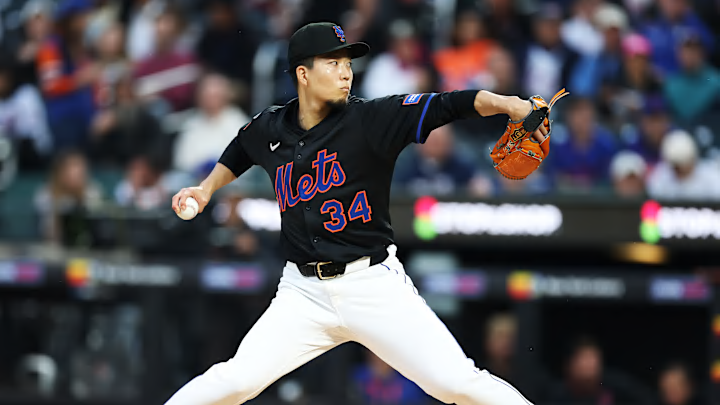There was a lot of excitement surrounding the Mets' offense entering 2025. The question was always: Will the pitching be good enough to support Juan Soto and company?
As of May 19th, the answer has been a resounding yes. Without Sean Manaea and Frankie Montas, the Mets' rotation ranks first in the MLB in earned run average. Nobody expected a Mets rotation with Manaea and Montas in it to be this dominant, let alone without both. The question now is: Is the success real, or a mirage?
Mets rotation experiencing some luck, but there have been sustainable changes
Mets' pitchers haven't experienced newfound success by pure chance, and it isn't the first time pitching coach Jeremy Hefner has pulled this off. Just last season, Hefner transformed Sean Manaea into one of the best pitchers in 2024 by tweaking his pitch usage and arm angle. The story has been the same for this year's free agent signings: Griffin Canning and Clay Holmes.
Before 2025, Clay Holmes hadn't started a game since 2018 for the Pirates. He found success as a reliever for the Yankees since then, but the Mets saw something in him and decided to sign him as a starting pitcher. They transformed him from a three-pitch pitcher into a pitcher with six(!) distinct offerings.
They added a changeup and cutter to his sinker, slider, sweeper, and fastball mix. The new variety adds more unpredictability and allows him to face lineups more than one time through. His ERA thus far is 3.14, and his xERA, according to Baseball Savant, is 3.53. This gap indicates he may be experiencing a bit of early-season luck, but even a regression toward his expected range would still make Holmes' season a success.
Griffin Canning's success can largely be credited to the improvements made to his slider. His slider is getting four inches of additional vertical drop this season compared to 2024, and he is now using it nearly as much as his four-seam fastball.
While some of Canning’s underlying metrics remain concerning—like a 91.7 mph average exit velocity allowed, consistent with past seasons that saw ERAs north of 4.00—the key difference this year is the batted-ball profile. The hard-hit balls haven't decreased, but they're being hit on the ground instead of in the air. His ground-ball rate has jumped from a career average of about 40% to 55.6% in 2025.
It is reasonable to assume this was the goal the Mets had in mind when reshaping his slider to have more downward movement. Canning currently has a 2.47 ERA and an xERA of 3.76. I do believe Canning has made real, sustainable changes that have made him a much better pitcher than in the past. However, I do think his expected ERA tells a more accurate story.The key metric here is his left on base percentage of 91.3%, which is unusually high for any pitcher and him specifically. Left on base percentage tends to normalize around the league average of 70-72% and as that happens, Canning's ERA will rise.
Regardless, like Holmes, even some regression to the mean won't stop the narrative that Canning has finally found a successful MLB formula.
There aren't many changes to speak of when it comes to Kodai Senga or David Peterson, but both are also show signs of overperforming early on. Senga has been phenomenal as the staff ace, posting a 1.01 ERA. It is safe to predict he won't continue this pace all season, but the question is how much regression to expect. Like Canning, Senga has an elevated left on base percentage at 87.2%. Suggesting more of these allowed baserunners will begin to score, I would expect him to finish the season closer to his 2023 ERA of 2.98.
Peterson has been somewhat of an enigma. Dating back to last season, the expected metrics have not liked Peterson, but he just continues to make it work. He had an ERA of 2.90 in 2024 despite having an xERA of 4.59, and in 2025, he has a 2.86 ERA with a 4.00 xERA. I don't think Peterson will regress quite to the 4.00 his expected ERA suggests, but I do think with increased workload as a starter this season, we will see it increase to the 3.50 range.
It is impossible to know how Montas and Manaea will perform when they return from injury in June, but the Mets have to be pleased with the rotational depth. In an era where pitcher injuries are inevitable, this asset is valuable.
Even with Manaea and Montas, I do not expect the Mets to continue performing like the best rotation in baseball. Senga, Canning, Peterson, and even Holmes are experiencing some luck, and it is hard to expect them to continue to play at this level all season.
That being said, I don't expect a complete collapse either. While some regression is expected, this group has shown enough to suggest the Mets’ rotation will remain a strength; not necessarily elite, but certainly good enough.
If the lineup experiences some positive regression for some of its stars (looking at you, Juan Soto), then the pitching staff should be more than good enough to keep the Mets in the upper-echelon of National League contenders.
